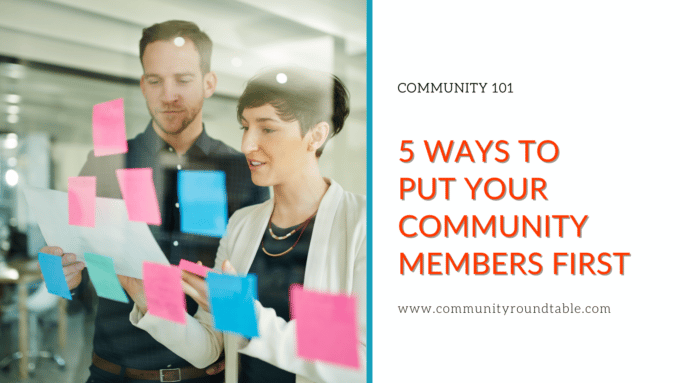Online customer communities solve many tangible business problems. They can increase case deflection, lower support costs, enable distance collaboration, and connect global audiences. Customer communities also empower their members by making them feel seen and heard.

Empowerment might not be on your radar as a community use case, but connecting with your audience can pay big dividends. When your members know you care the online relationship shifts from a transaction to an interaction. A whopping 62% of customer communities report that their members feel seen and heard through online community initiatives. How can you make sure the communication in your communities is a two-way street?
Here are five ways we’ve found to put your members first – making them feel valued and contributing to long-term engagement and member satisfaction.
1 – Integrate members into your strategy
For a lot of you this is going to be a big, “yeah, obviously” but online community members often take a back seat to corporate initiatives when it comes to strategy. Create formal member input channels for member feedback, like ideation programs, suggestion boxes, and event old-fashioned contact us forms. Also critical?
Make them easy to use. You want the barrier to contributing to be very low. You can set up a regular cadence of surveys for members, either tied to your editorial calendar (ie. surveys happen in June and December every year) or tied to member milestones like anniversaries or engagement markers.
The most important step here isn’t collecting the data, it’s truly integrating member input into your strategic conversations. Regularly review ideas and bring member feedback to relevant conversations. Don’t forget to acknowledge member contributions to help members understand where and how you are using their feedback.
2 – Give members visibility
The first rule of member feedback is: give credit! Always mention the member who originated an idea/attach their name to the feature, both internally and externally. This both provides positive reinforcement for the behaviors you want to see in your community and encourages others to share their feedback and ideas. You can also give shoutouts in the community and internally at your organization for those that might not have ideas or feedback that is used but are taking their time to contribute.
You can also create a formal recognition program (often called superusers, advocates, etc.) to tie member contributions back into the strategy of the community. This can be gamification, badges, branded swag, or awards, and doesn’t need to be physical gifts. Banners/labels on a profile or special mentions during calls or events are great rewards that don’t tax your budget. You can learn more ideas for superuser programs here.
3 – Recognize your members
Regularly spotlighting members and their work is a low-lift way to increase individual visibility in your community. Member recognition and spotlight programs do double duty as an engagement tactic, as they recognize the work of members and provide a way for members to get to know each other.
Sharing member contributions publicly may not always be an option for you, depending on your community type and organization’s standards. However, if you have a community Twitter, Facebook group, or LinkedIn you can cross-post content there. Sharing about community members publicly gives some visibility to what they’re doing behind the scenes.
4- Listen!
Make sure you’re proactively connecting with members with regularly scheduled check-ins. Don’t wait for them to come to you! Pay attention to what members are talking about, asking for, and challenged by. You can then create content and design programming that applies to these situations, even if they didn’t ask for it explicitly.
You can say you’re listening, but unless members see the result of that, are you really? Be sure to act on what you see, hear, and are asked about. Be flexible and willing to act (often easier said than done!) but your willingness to implement ideas and enact changes turns your listening into tangible action.
5 – Be transparent
Regularly share your strategy and roadmap and then listen to your customer community’s input. If online community members do have a say in your strategy/roadmap, make sure you touch base with them regularly to keep them involved. Don’t make them feel like an afterthought. If they have taken the time to influence your work, understanding how their contributions are being implemented is gratifying. If members aren’t directly involved in your strategy/roadmap, you can still update them on progress and plans to help them feel more connected to the community program.
When possible, share the reason why decisions were made. This leads to telling them why you make the decisions you do which can help them understand why your community operates as it does. Be straightforward and explain whether and why something works or fails. This transparency leads to trust, and if members trust you, you have truly built a community.
